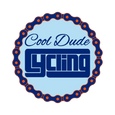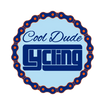Sean Kelly, the “King of the Classics,” was a force of nature in professional cycling, ruling the 1980s with a steely gaze and relentless legs. Born on May 24, 1956, in Waterford City, Ireland, Kelly amassed 193 professional victories, including nine Monuments, four Paris-Nice titles, and the 1988 Vuelta a España. Yet, it’s a quirky moment from the 1986 Paris-Nice—a rain-soaked stage where he reportedly ducked into a pub for a quick whiskey to “warm up”—that captures his blend of grit and mischief. This tale, paired with his dominance in brutal races and understated Irish charm, made Kelly a legend. Retiring in 1994, he left a legacy as cycling’s ultimate hardman, and this story dives into his career, iconic races, and the off-bike moments that endeared him to fans.
From Irish Fields to Pro Peloton
Sean Kelly’s journey began far from cycling’s European heartland. Growing up on a farm in Carrick-on-Suir, a small Irish town, he rode a second-hand bike to school, sparking a love for two wheels. By his late teens, he was racing locally, showing raw power that caught the eye of scouts. In 1977, at 21, he turned pro with the Belgian Flandria team, a bold leap for an Irish rider in a sport dominated by Europeans. His breakout came in 1978, with stage wins at the Vuelta a España, where his sprinting prowess and ability to endure punishing conditions shone through. Nicknamed the “Hardman” for his stoic resilience, Kelly quickly became a rider who thrived in the toughest races, setting the stage for a remarkable career.
Ruling the Classics and Grand Tours
Kelly’s dominance in the 1980s was staggering. He won Paris-Nice four times (1982-1988), a record for the “Race to the Sun,” showcasing his versatility in stage races. His true domain, however, was the classics. With nine Monument victories—two Paris-Roubaix (1984, 1986), two Liège-Bastogne-Liège (1984, 1989), two Milan-San Remo (1986, 1992), and three Lombardy (1983, 1985, 1991)—he became the “King of the Classics.” His 1984 Paris-Roubaix win, battling through mud and cobbles, cemented his reputation as a rider who could conquer any terrain. In Grand Tours, he was equally formidable, claiming four stage wins and the green jersey at the 1984 Tour de France, outdueling sprinters like Eric Vanderaerden. His crowning achievement came in 1988, winning the Vuelta a España, a testament to his all-round ability.

Kelly’s 193 pro wins, including 16 Grand Tour stages, made him one of the era’s giants. In 1984, he became the first rider to hold the UCI World No. 1 ranking, a position he maintained for five years. His secret? A relentless work ethic, an uncanny ability to read races, and a knack for winning in rain, wind, or cobbles—conditions that broke lesser riders. Whether sprinting to victory or grinding through the Ardennes, Kelly’s quiet intensity made him a feared competitor.
The Whiskey Pit Stop and Race Antics
The 1986 Paris-Nice stage is the stuff of cycling folklore. On a cold, rain-drenched day, with the peloton slogging through southern France, Kelly, soaked and shivering, reportedly veered off course into a roadside pub. He grabbed a whiskey, downed it to “warm up,” and rejoined the race with a cheeky grin, as recounted in cycling lore and retrospectives. The story, though possibly embellished, captures the 1980s peloton’s raw, unpolished charm, when riders could get away with such antics in an era before GPS tracking and nutritionists. Kelly’s teammates later joked he looked perkier after the stop, though he neither confirmed nor denied the tale with much fanfare—just a wry smile.
Other race moments highlighted his mischievous side. During the 1985 Tour de France, he’d banter with rivals in the peloton, his dry humor cutting through the tension. Once, after a crash in a classic, he remounted with a mud-caked face, deadpanning to a reporter, “Good day for a swim.” His ability to race through pain—broken collarbones, bruised ribs—while maintaining a stoic front made such lighthearted moments stand out, endearing him to fans who saw both a warrior and a wit.
Off-Bike Grit and Irish Charm
Off the bike, Kelly was a man of few words but immense presence. He returned to his family farm between seasons, staying grounded in his Irish roots. Locals in Carrick-on-Suir treated him like royalty, with pub stories of “our Sean” racing in France still circulating. His rare interviews revealed a dry wit: when asked about the whiskey stop years later, he shrugged, “Maybe it happened, maybe it didn’t,” leaving fans chuckling. After retiring in 1994, he became a respected commentator for Eurosport, his gravelly voice and sharp insights winning new admirers. He mentored young Irish riders, including Sam Bennett, and his Sean Kelly Cycling Academy in Belgium nurtured talent, reflecting his commitment to the sport.

Fans loved his relatability. At a 1990s charity ride in Ireland, he joined locals for post-ride pints, swapping stories as if he weren’t a global star. His love for the simple life—farming, family, and a quiet pint—contrasted with his fierce racing persona, making him a national hero who never chased the spotlight. His influence helped put Irish cycling on the map, paving the way for riders like Stephen Roche and Dan Martin.
Legacy of the Hardman
Sean Kelly’s legacy is etched in his 193 wins and unmatched classics record, but it’s his grit and character that endure. The whiskey pit stop, whether true or tall tale, symbolizes an era when cycling was raw, unpredictable, and deeply human. The 1980s peloton, with its lax rules and colorful characters, feels distant in today’s data-driven sport, but Kelly’s ability to conquer rain, cobbles, or chaos remains a benchmark. Fans still celebrate his Hardman nickname, sharing grainy clips of his Roubaix triumphs or joking about his pub detour on social platforms. His impact was seismic, inspiring a generation and elevating Ireland’s cycling stature. Celebrate his legacy with the Ireland Cycling Gear collection, honoring the spirit of Irish cycling. From a farm boy’s second-hand bike to the top of the cycling world, Sean Kelly defined an era with grit, grace, and a splash of whiskey.







